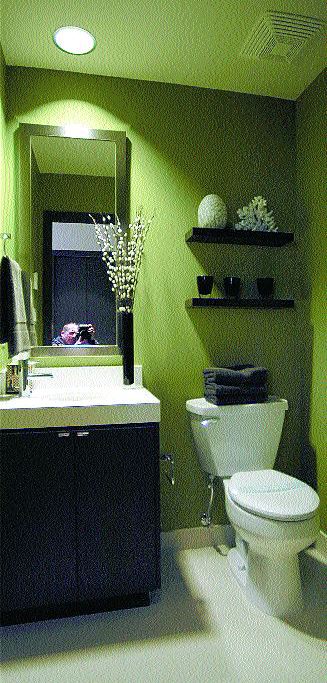The vast majority of facilities operate without harming the safety of neighbourhoods or dragging down property values, reports conclude
Lori Culbert
Sun

Mary Sutherland fought with city hall over the opening of the Triage facility, but now she sits on the facility’s advisory committee. Photograph by : Ian Lindsay, Vancouver Sun
Crime will go up. Property values will fall. Traffic and noise will increase. My neighbourhood will be less desirable.
They are complaints often made by residents who fear for their families should a halfway house, drug treatment centre, or home for the mentally ill be opened in their community.
They are, perhaps, understandable concerns from people afraid of the unknown.
But are they valid?
With several of these social housing sites either being proposed or recently opened in Metro Vancouver, The Vancouver Sun attempted to research whether these fears have merit.
Academics, city planners and people involved in running these facilities all point to a host of research that shows there is no evidence of crime rates spiking or real estate values plummeting near social housing sites.
A Vancouver city hall study, which analysed 25 years of complaints to city hall and two years of police calls, shows there is no evidence of repeated cries for help near the facilities.
“We found that 71 per cent of the special-needs facilities don’t have any single call registered,” said social planner Anne Kloppenborg, who wrote the report.
Simon Fraser University professor Julian Somers reviewed multiple research papers that studied the effect of social housing on crime rates and property values — and concluded there was no effect.
“Things that people might intuitively raise as concerns seem not to materialize,” Somers said.
None of that rings true for Ernie Mendoza, who is against a proposal to build a 32-bed drug-recovery and supportive-housing facility on a residential street in Richmond.
“It is introducing an institution in a well-established family community,” said Mendoza, a member of Caring Citizens of Richmond.
“It is not compatible with the nature of the area — a well-established single-family community with a lot of schools and a lot of children walking by.”
In interviews with The Sun in November, opponents of the proposed facility complained about no one wanting to buy houses for sale on the same street, as well as concerns about crime escalating.
Caring Citizens of Richmond claims to have collected more than 12,000 signatures on a petition against the proposed Ash Street facility, to be run by Turning Point Recovery Society.
Brenda Plant dismisses the opponents’ “misinformation” as “fear-mongering.” She is the executive director of Turning Point, which has run a drug treatment centre in Mount Pleasant since 1985 and one on Odlin Road in Richmond since 1999.
“The evidence is very compelling: We’ve been on Odlin Road for over eight years and we’ve never had a safety issue,” said Plant, who is the sister of Geoff Plant, Vancouver’s Project Civil City commissioner and one of the guest editors of today’s Sun.
“Turning Point has been around for 25 years, and we’ve monitored property sales in neighbourhoods that we’re in, and there’s no indication that property sales have suffered.”
Plant’s non-profit organization, which receives provincial funding, still needs approval from Richmond city hall to build the Ash Street facility.
There were five months of frenzied community opposition in 1999, when the Odlin Road centre opened in Richmond. Demonstrators marched with placards, angrily worded banners were strung from houses, and a ghetto blaster shouted: “Turning Point get out! Turning Point get out!”
Since then, there have been few complaints, Plant said.
Richmond RCMP Cpl. Nycki Basra said police have had no trouble with the facility. “The facts are that we have not seen any sort of any increase in crime or calls to service for the Turning Point or the neighbourhood surrounding the Turning Point as compared to other neighbourhoods in Richmond,” she said.
Chris Babuin, who lives beside the Odlin Street recovery centre, has had a few relatively minor concerns over the years about his neighbours, which were addressed immediately by Plant.
“Nothing serious has happened here, just small little irritants once in a while,” said Babuin, who has lived beside the centre for six years.
However, Babuin has some sympathy for opponents of the larger facility proposed for Ash Street, saying it could bring more noise and traffic to their area.
The type of opposition against Turning Point was seen recently on Vancouver‘s west side, when residents feared the city planned to build large drug recovery centres at 16th and Dunbar and at 16th and Fir streets.
“There was a lot of unease about addicts. … The site is too far away from any treatment facilities for addicts,” said George Pinch, co-chair of the Dunbar Residents Association. “It would likely attract undesirable elements to the neighbourhood.”
The concerns in both neighbourhoods have faded since the city decided to build low-rent housing, which will include facilities for the mentally ill — not former addicts.
There has also been opposition in east Vancouver: to a 10-bed addictions recovery facility at 49th and Fraser, just approved by the city; and to Triage, a 30-bed centre for the mentally ill and addicted, which opened last year at 41st and Fraser.
Vancouver realtor Mary Sutherland was one of several area residents who fought with city hall over Triage because she thought there was not enough community consultation.
The city made some — but not all — of the changes the neighbours requested, and today Sutherland sits on the facility’s community advisory committee.
Since Triage opened seven months ago, there have been no safety concerns, Sutherland said.
“We’re cautiously optimistic,” she said. “So far it has been okay.”
Several other neighbours of Triage, who were interviewed by The Sun two months after it opened, also said they had not experienced any problems.
The Vancouver city hall review, done in 2006, analysed complaints against 148 “special needs residential facilities” in the city — which serve federal offenders, recovering addicts, troubled youth, the mentally ill, women seeking shelter, seniors and others.
Kloppenborg, the social planner, reviewed 25 years of electronic records and paper files at city hall, and Vancouver police looked at its calls for service to the facilities from November 2003 to November 2005.
The report found there was a “consistent pattern” of neighbourhood opposition when the facilities were first proposed, and that neighbours were most concerned about reduction of property values, noise disruptions, and safety and crime.
The report concluded the “fears … are not warranted,” and found:
– 71 per cent of the facilities had “no calls/complaints registered either in city files or in police files.”
– Between 1981 and 2006, the total number of complaints for all 148 facilities was between zero and two per year.
(By comparison, the report noted, the city gets an average of 150 complaints per year about illegal suites, and close to 500 per year about untidy properties.)
The public called police 73 times over two years with concerns about something at or near the 148 facilities. The police said:
– 42.4 per cent of the calls could be connected to a facility. Some were complaints about the on-site behaviour of a resident, such as a teen banging on a door; others were off-site reports, such as an elderly resident at a nearby business acting confused.
– 24.6 per cent related to events near the facility but may or may not have been related to it, such as a car driving erratically or an intoxicated person in a fight.
– 33 per cent were theft from or damage to parked vehicles, or stolen or recovered vehicles.
“In the view of the police, this call rate is low,” the report said.
By comparison, locations police tag as “problem premises” generate about two calls per month; the 73 calls over two years for these 148 facilities was an average of .02 calls per month.
The report acknowledged not all neighbours file a complaint or phone police about a concern, but noted the infrequency and “generally minor nature” of the complaints suggest “the vast majority of [these 148 facilities] operate without negatively affecting their neighbours.”
In an interview, Kloppenborg said she did a similar review in conjunction with police about 15 years ago about youth facilities, and did not find a spike in crime statistics then either.
Such studies, she cautions, don’t prove that clients of the facilities aren’t committing crimes — they just show any crimes being committed are not happening near where they live.
A 2007 study, Housing for People with Substance Use and Concurrent Disorders, also concluded “there is no negative impact on safety or property values” in a neighbourhood when new social housing is opened.
The study, which was commissioned by Vancouver Coastal Health, involved SFU’s Somers and professors from the University of B.C., Toronto and New York amalgamating the findings of multiple research papers into the subject.
The study found “the opinions of neighbours have … been reported to change over time, with initial opposition being replaced by the view that residents of community housing facilities are good neighbours.”
In response to residents’ concerns in 2005 about social housing coming into their neighbourhoods, another city hall report analysed several Canadian and U.S. studies that all also concluded there was no impact on real estate values.
The city hall study noted that in 1999-2000, four appraisal firms commissioned by the B.C. government looked at seven non-market housing developments in different B.C. communities, including Champlain House, a group home in Killarney.
“Over all, no significant effect from the group home was found on sale prices or marketing time for properties in the [immediate] area,” concluded the Ministry of Social Development and Economic Security document.
A group of Vancouver residents using the name NIABY (Not In Anyone’s Backyard) runs a savvy website to argue against drug recovery centres in neighbourhoods, mainly on the grounds that crime will rise. The website points to a U.S. academic study that shows a spike in crime near large social housing facilities with 53 or more residents.
As Vancouver city hall senior housing planner Jill Davidson notes, the U.S. study goes on to say that it appears the clients of the facilities were not perpetrating the crimes, but were likely the victims of them.
That appears to be of little comfort to people who just don’t want those facilities next door.
Besides the 50-bed Dunbar and 70-bed Fir Street proposals, city hall wants to build 10 other new social housing developments across Vancouver and plans to hold open houses for community feedback later this year.
Davidson said the city needs to create 300 social housing units a year to keep up with the need.
Tim Veresh is executive director of the Lower Mainland branch of the John Howard Society, which operates halfway houses for federal offenders in Surrey and Vancouver.
He could not recall any complaints against the halfway houses over the last decade, and said that may be because police, probation officers and trained staff are constantly at the facilities.
Veresh said there are few examples over the years of cases like Eric Fish, who walked away from a Vernon halfway house in 2004 and fatally beat a man.
His clients are screened and any dangerous offenders can be refused.
Veresh stresses that social housing co-exists well with a community only if it is run properly. “These aren’t flophouses,” he said of his halfway houses.
Somers, the SFU professor, noted there is no “cookie-cutter supportive housing model that is going to be optimal in every community.”
He said it is crucial to involve residents in decision-making — because the success of a facility will be based, in part, on its clients feeling like they are part of the neighbourhood.
“The opportunity for developing stronger neighbourhood connections comes through the process of cultivating social inclusion,” Somers said.
© The Vancouver Sun 2008










